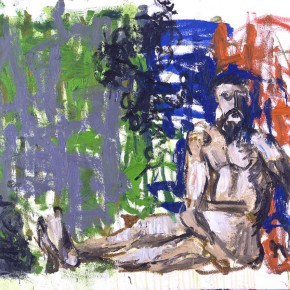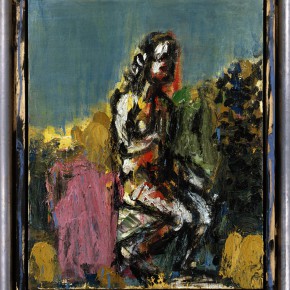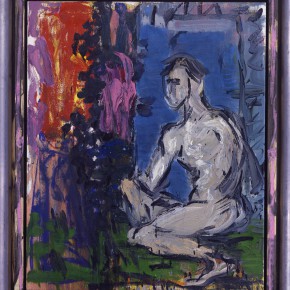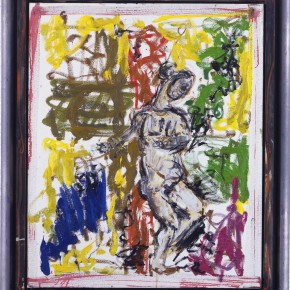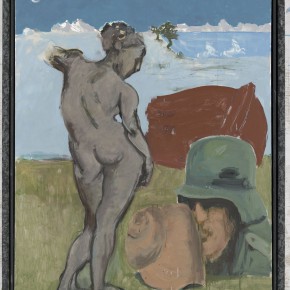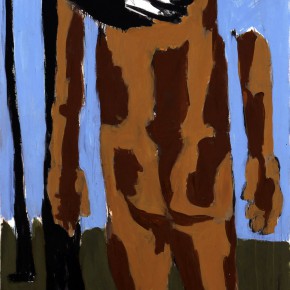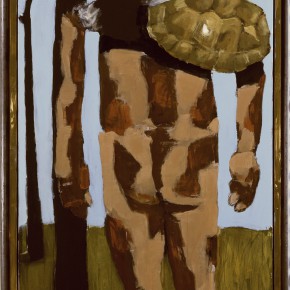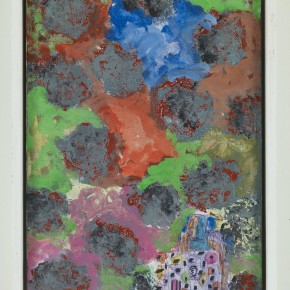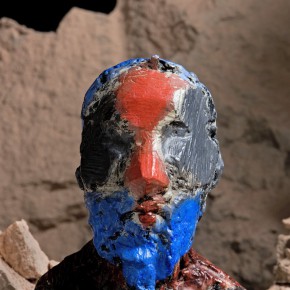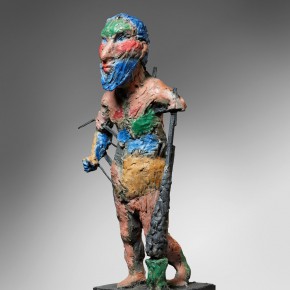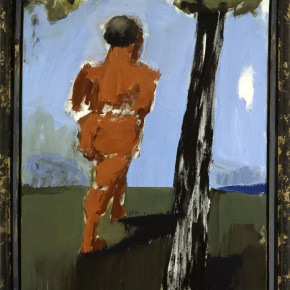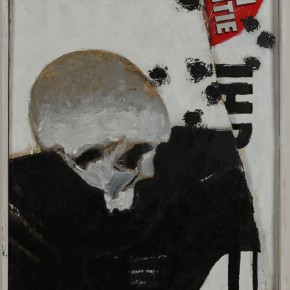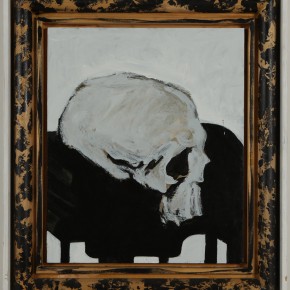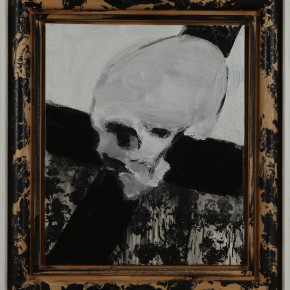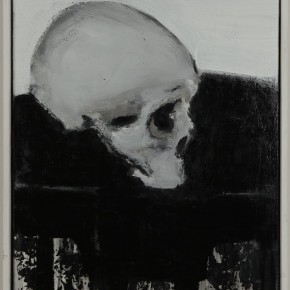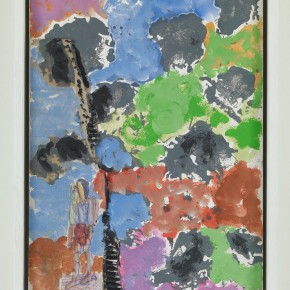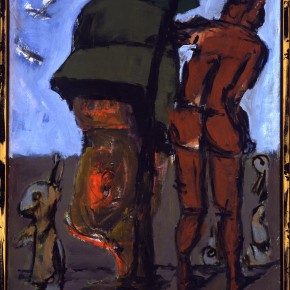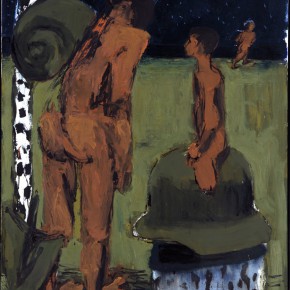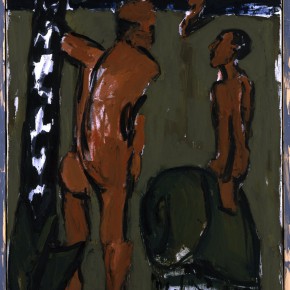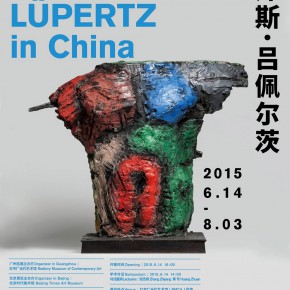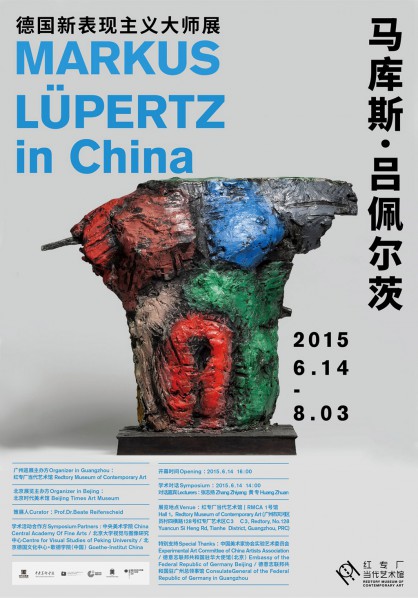
On June 14th, 2015, the solo exhibition of German Neo-Expressionism master, Markus Lüpertz was unveiled in Redtory Museum of Contemporary Art, the itinerant organizer in Guangzhou, with his new works (56 Easel Paintings, and 25 sculptures) in recent ten years. Organized by Beijing Times Art Museum, this itinerant exhibition in China stands as the largest-scale solo exhibition of Lüpertz in China until now. From April 24th to May 24th, the exhibition in Beijing had aroused intensive and active repercussions.
Born in 1941, Markus Lüpertz had been positioned as the dean of Dusseldorf State Academy of Art for more than 20 years. He began art creation in the 1960s and has always remained passionate creation. He is known to the world as one of the most important German Neo-Expressionist artists, together with Anselm Kiefer, Jorg Immendorff, Georg Baselitz, A.R. Penck, etc. In addition, he is also famed as a national treasure artist. Lüpertz is full of glorious talents while he is versatile in paintings, sculptures, poems and jazz music, nothing unreasonable; To pursuits his trendy life and perfect appearance, he also obsesses on cars, boxing, fashion and food; With his unrestrained, insistent and straightforward personalities, he even dares to consider himself as a genius artist.
The creations from German Neo-Expressionist were originated in the 1960s. The emergence of German Neo-Expressionism precisely continued the long-standing European tradition of painting when the domination of Modernism in Europe was coming to a termination. It also triggered a discussion of the recursion of painting in the field of Fine Art in the 1980s. Based on the German Expressionism in the early of 19th century, Neo-Expressionism focused on that former history and realities under the new social conditions and continuously improved the evolution of painting languages. Gradually, German Neo-Expressionism became the main style of European Art at that time, which was distinctly different from the contemporaneous and dominated American-style Abstract Expressionism, POP Art and the following Performance Art, Conceptualism, Happening Art and Land Art which successively emerged after the 1960s.
German Neo-Expressionists strikingly carried the individual effects and personal passion, emphasizing on an improvisational painting language. For China, it has a significantly shocking impact on the creation style of a batch of Chinese artists since the 1980s and 1990s, including Ma Lu, Miao Xiaochun, Shen Ling, Tan Ping, Zhang Fangbai, Zhang Xiaogang, etc (in alphabetic order). Until now the introduction of Neo-Expressionism still has great impacts on the Chinese art field from different perspectives including philosophy, humanity, society, so on and so forth. Chinese artists not only realized the sense of cages breaking, but also started to critically rethink the Chinese history and tradition. It further enriches the exploration on the art theme and art language of Chinese modern and contemporary art to a more abundant and more diversified level.
Redtory Museum of Contemporary Art (RMCA) has always been dedicated to international art communication, emphasizing on theoretical and rational thinking of art and investigating the original root, developing path and inter-influence of modern and contemporary art. In the contextual condition of globalization, RMCA explores various artistic patterns and the resonance and correlation at the current time and local place in order to contribute to the development of Chinese Contemporary Art.
The exhibition of “Markus Lüpertz in China” will last from June 13th to August 3rd, 2015.
Introduction of RMCA
Museum Hours: Tuesday to Friday: 11:00-19:30 Saturday and Sunday: 9:30-19:30 (Closed on Monday)
RMCA will notice separately through official WeChat in case of statutory festivals and special weather.
Venue: C3, Redtory, No. 128 YuancunSiheng Road, Tianhe District, Guangzhou, China
Courtesy of the artist and Redtory Museum of Contemporary Art, for further information please visit www.redtory.com.cn.


